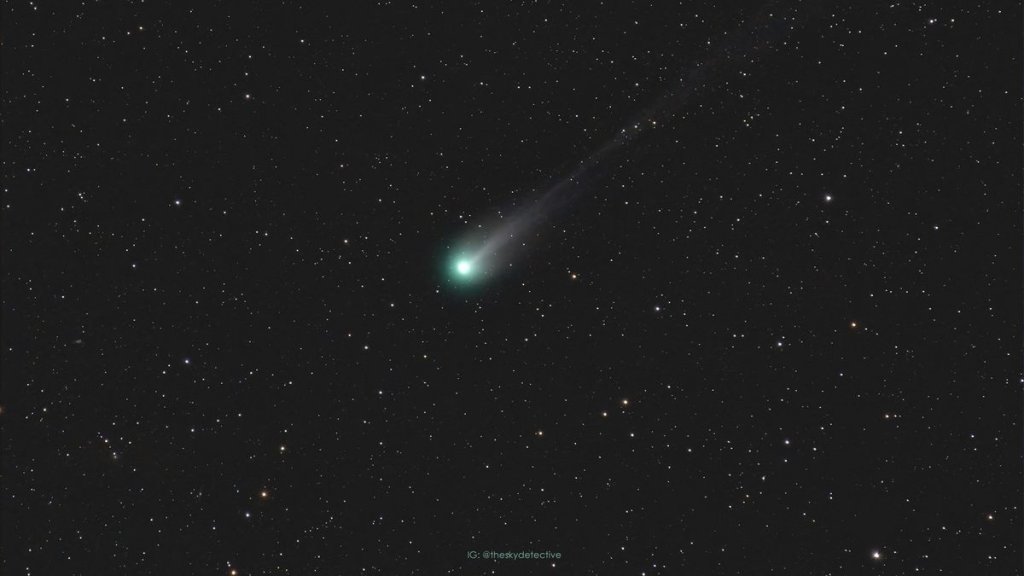
Will ‘Devil Comet’ 12P/Pons-Brooks survive its close encounter with the sun? (Image Credit: Space.com)
Comet 12P/Pons-Brooks, also dubbed the ‘Devil Comet’ has thrilled skywatchers in recent months with its impressive night sky display and sudden flare-ups in brightness. But as it approaches perihelion — its closest distance to the sun — on April 21, will it survive the encounter or be subjected to a fiery fate?
Well, there’s good news and bad news.
The good news is that comet 12P/Pons-Brooks’ survival chances are promising as it will give the sun a wide birth during perihelion, passing at about 72.6 million miles (116.8 million km), equivalent to three-quarters the Earth’s distance from the sun. The bad news for Northern Hemisphere skywatchers is that after its solar flyby, the comet will “fade very rapidly and largely become an object for Southern Hemisphere observers” commented Space.com skywatching columnist Joe Rao in a previous article.
Related: Amazing photos of ‘horned’ comet 12P/Pons-Brooks from around the world
Rao estimates that comet 12P/Pons-Brooks will probably drop to 6th or 7th magnitude by the end of May and 8th or 9th magnitude by the end of June.
Those in the Southern Hemisphere have had to wait patiently for 12P/Pons-Brooks and can only now start to see it in the southern sky.
But it’s still not too late to catch a glimpse of the ‘Devil Comet’ in the northern sky before it completely disappears into the sunset glow.

There has been some mention of future flare-ups in the coming weeks that could cause the comet to brighten significantly, so Rao asked well-known comet expert John Bortle for his opinion. Bortle noted that while the comet brightened dramatically last summer when it was far from the sun and just starting to get active, for any flare-ups in the near future, the comet will not appear to brighten very much because the overall brightness of the comet has increased significantly as it now has moved much closer to the sun.
“As a result,” notes Bortle, “the outburst brightness cannot overwhelm the overall brightness of the comet’s coma as easily.”
After perihelion on April 21, the celestial vagabond will continue its journey through the solar system before returning to our skies in 2095.





